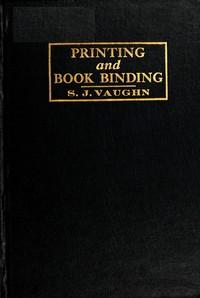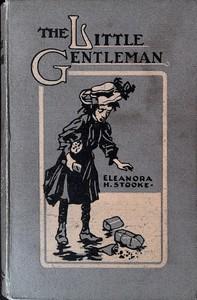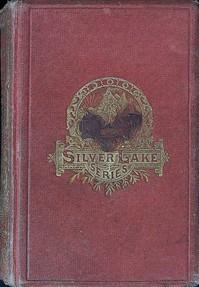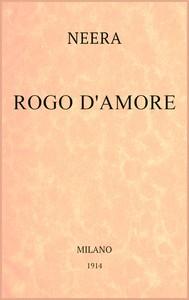|
|
Read this ebook for free! No credit card needed, absolutely nothing to pay.Words: 36648 in 15 pages
This is an ebook sharing website. You can read the uploaded ebooks for free here. No credit cards needed, nothing to pay. If you want to own a digital copy of the ebook, or want to read offline with your favorite ebook-reader, then you can choose to buy and download the ebook.

: Printing and bookbinding for schools by Vaughn Samuel Jesse - Bookbinding; Printing@FreeBooksTue 27 Jun, 2023 : PAGE Introduction 1 The Art of Printing--Methods and Tools of Composition 5 Type Setting 14 Rules of Composition 25 Proof Marks 27 Imposition 28 Presswork 38 Cleaning and Distributing 42 What to Print and How to Proceed 45 Wood Cuts and Metal Plates 50 The Equipment--Its Selection and Cost 56 Arrangement and Disposition of Equipment 65 INTRODUCTION Printing as a Manual Art in Schools. Woodwork has been quite generally introduced into the high school and grammar school. With all the defects of the earlier presentation of the subject, not to speak of those in later efforts, it has made a surprisingly general appeal, and has met with unusual and deserved success. Some of the methods employed, tending to place a ban on originality and thought, have brought it far short of its possibilities in the aid of intellectual development. To a considerable extent the woodwork has not touched, as intimately as it might, the vital interests of the pupils and of the homes; and, by its own limitations, it has not had an especially strong social bearing. The need is not less woodwork but more original and thoughtful woodwork, and also a greater variety of other constructive work which touches more and wider interests and which may appeal to those not particularly adapted to that one line. In this way it will be possible to strengthen the places where woodwork is weak. So far experience with printing in school indicates that it makes quite as general and permanent an appeal as woodwork. Printing makes this very strong appeal to the boys because, in the first place, the printshop comes as near to reproducing a great world industry in the school as any other line of industrial work. Instead of doing simply the "roustabout" work of the beginning apprentice the boys are put to work with the regular shop equipment, and soon are ready to begin turning out some printing. It is a common thing to hear a boy remark, "This is just the way they do it down town." So they look upon printing as the work of real men, and feel that they are actually taking part in some of the activities that are potent in the affairs of men. It's wonderful, the pull of this feeling of participation in the world's work. Besides this, there is probably no other line of Manual Arts work in which pupils, grade boys especially, get so practical a working knowledge of the actual shop work as in printing. This fact is often turned to good advantage by the boys, for there can scarcely be found a commercial printshop anywhere which is not glad to employ one or two boys during vacation time, if they know a little about the work and are interested. There is the still further fact that printing offers the concrete embodiment of rules of punctuation, capitalization, syllabication, sentence structure, paragraphing, etc. It is an indisputable fact that work in the printshop influences in a remarkable way the disposition to observe good form and to follow the best usage in all such matters. It is a daily occurrence in the school printshop that some boy brings a text book or newspaper to exhibit what he considers a glaring disregard of some of these principles of composition. Printing furnishes a distinctly different type of motor activity from woodwork, for it is the arrangement of certain unyielding forms within limited space to produce some desired effect. In the matter of social significance printing is practically ideal. Almost every problem is a community project, that is, a number of pupils combine their efforts to produce it. Practically every task in the printshop is undertaken with the consciousness of real service to a great number of people in the school or in the community at large. It is interesting to note that among the boys in school, the genuine joy in the production of printed matter does not necessarily arise out of a sense of the commercial value of the product. The class that has printed and illustrated a little pamphlet of stories for the second or third grade are proud and happy immeasurably beyond the pride and happiness that would come from a job of office blanks worth so many dollars. In other words, they are happy to the extent that the quality of their work merits praise, and that they feel able to make others happy by their services. The school paper is an enterprise of very much the same nature. It is a real influence and a genuine service performed for which they expect no individual return except in the appreciation of those they serve, and pride in the excellence of their work and the skill it shows. This is certainly a kind of training for which there is a distinct need just now. There is no other one of the Manual Arts that can touch so intimately the varied classwork, interests, and activities of school life as does printing, especially when combined with bookbinding. Free books android app tbrJar TBR JAR Read Free books online gutenberg More posts by @FreeBooks
: The Little Gentleman by Stooke Eleanora H Marquand E R Illustrator - Girls Juvenile fiction; Grandparent and child Juvenile fiction; Poor families Juvenile fiction; Kindness Religious aspects Christianity Juvenile fiction@FreeBooksSat 24 Jun, 2023
|
Terms of Use Stock Market News! © gutenberg.org.in2025 All Rights reserved.






